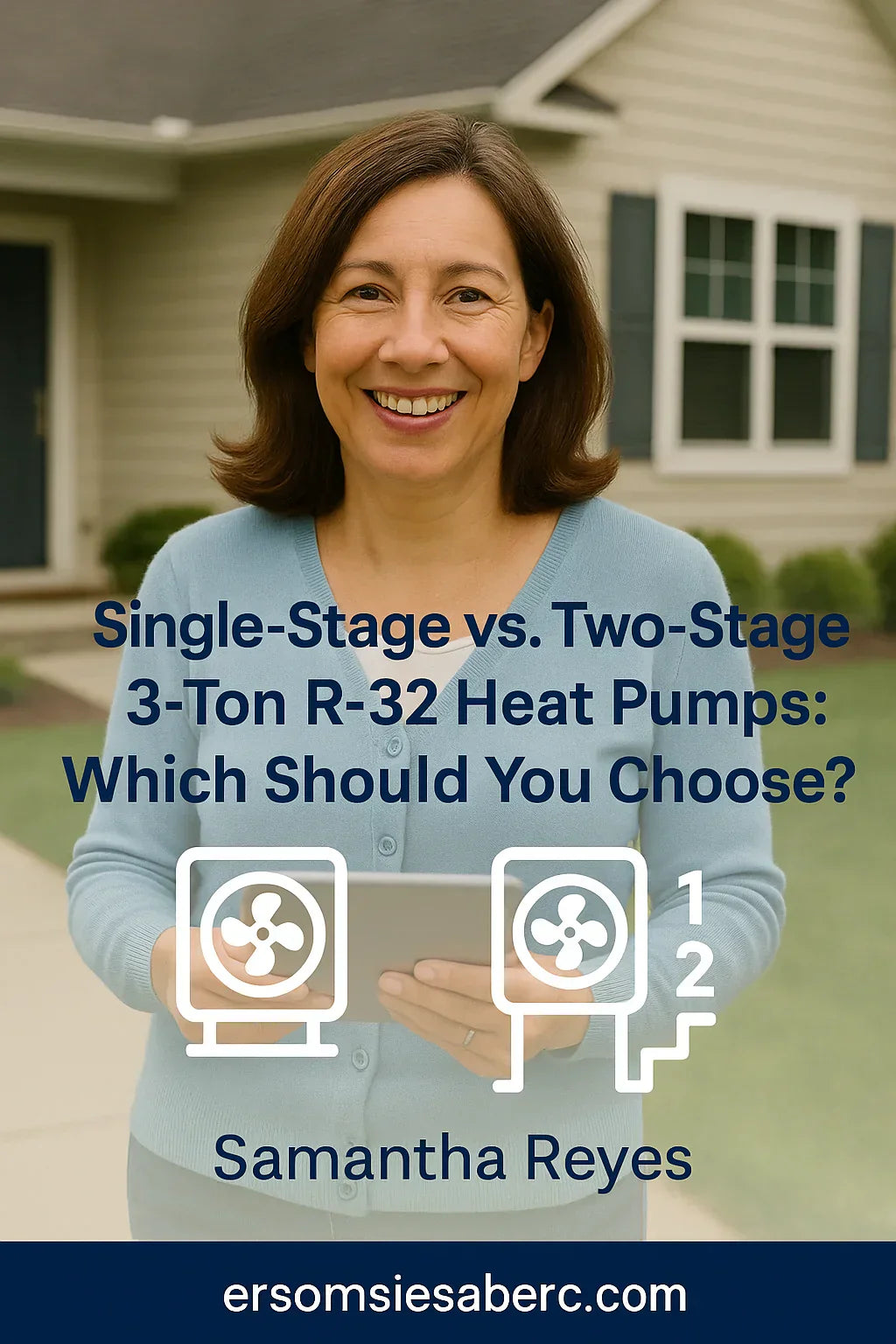💬 Introduction: Why Staging Matters More Than You Think
When I first heard the terms “single-stage” and “two-stage” while shopping for my heat pump, I thought it was just another technical upsell. But after living with both types, I can tell you: staging makes a noticeable difference in comfort, energy use, and even noise levels.
In this guide, we’ll explore how staging works, the pros and cons of each, how it ties into R-32 refrigerant technology, and how to decide which is best for your home.
⚙️ How Heat Pump Staging Works
Single-Stage Operation
-
Runs at 100% capacity whenever it’s on, then shuts off completely.
-
Fewer internal parts mean less complexity, but less flexibility in output.
-
Think of it like driving a car that’s either at full throttle or at a complete stop.
Two-Stage Operation
-
Has two output levels: low (~60–70% capacity) and high (100% capacity).
-
Runs on low most of the time for steady comfort, kicking into high only when needed (like extreme heat or cold).
-
More energy-efficient in variable weather because it avoids the constant “start-stop” of single-stage systems (Energy.gov Heat Pump Basics).
📊 Energy Efficiency Comparison
Efficiency isn’t just about SEER2 ratings—it’s about how your system operates day to day.
| Type | Typical SEER2 Range | HSPF2 Range | Energy Use Pattern |
|---|---|---|---|
| Single-Stage | 14.3–16 | 7.5–8.0 | More frequent full-power cycles |
| Two-Stage | 15–18+ | 8.2–9.5 | Longer, lower-power cycles save energy |
Why Two-Stage Often Wins
-
Less cycling means less wasted start-up power.
-
Maintains closer-to-setpoint temperatures, reducing strain.
-
In climates with big temperature swings, the two-stage advantage can save 5–15% on annual utility bills (Energy Star Efficiency Standards).
🏠 Comfort & Indoor Climate Control
This is where I personally noticed the biggest difference.
Single-Stage Comfort
-
Quick temperature changes but more noticeable swings.
-
Can lead to uneven cooling/heating in multi-story homes.
-
Humidity control is adequate, but not exceptional.
Two-Stage Comfort
-
Steadier temperatures—low stage runs longer, keeping indoor climate stable.
-
Better humidity control—longer run times remove more moisture from the air.
-
Quieter operation—low stage is significantly less noisy than high stage.
When I switched to a two-stage system, my summers felt less sticky, and my winter heat felt more even.
💰 Cost Differences
Equipment Costs (2025)
-
Single-Stage 3-Ton R-32: $4,500–$6,500
-
Two-Stage 3-Ton R-32: $5,800–$8,200
Installation Costs
Labor is roughly the same—$3,000–$5,500—though two-stage systems may require slightly more setup for controls (Heat Pump Cost Data).
Operating Costs
Two-stage systems typically save $100–$300/year in energy, depending on climate and usage (Energy Saver Heat Pump Guide).
🌎 Environmental Impact
No matter which staging option you choose, switching to R-32 refrigerant helps:
-
Lower GWP (~675) compared to R-410A (~2,088) (EPA GWP Data).
-
Requires less refrigerant per charge, lowering total greenhouse gas potential.
Two-stage systems may further reduce environmental impact by running more efficiently year-round.
🔍 Which Should You Choose?
Choose a Single-Stage R-32 Heat Pump if:
-
You live in a mild climate with minimal seasonal swings.
-
You’re looking for lowest upfront cost.
-
You plan to sell your home soon and want a reliable, cost-effective upgrade.
Choose a Two-Stage R-32 Heat Pump if:
-
You want max comfort with fewer hot/cold spots.
-
You live in a variable climate with hot summers and cold winters.
-
You plan to own your home for 10+ years and want lower operating costs.
🧰 Samantha’s Buying Checklist
-
Run a Manual J Load Calculation – Never size your system by square footage alone (ACCA Manual J Guide).
-
Check Efficiency Ratings – Look at SEER2 and HSPF2.
-
Ask About Rebates – Many utilities offer bigger rebates for two-stage models.
-
Verify Installer R-32 Certification – R-32 is mildly flammable (A2L), so you want a pro trained to handle it safely (AHRI A2L Safety Standards).
💬 Closing Thoughts
Whether you choose single-stage or two-stage, pairing the right staging type with R-32 refrigerant gives you a system that’s efficient, environmentally responsible, and ready for the next decade.
For my home? I chose two-stage. It wasn’t the cheapest option, but the comfort improvement was instant, and I love knowing my energy bills are lower year after year.
In the next topic we will read about: Cold Climate Performance: How 3-Ton R-32 Heat Pumps Handle Winter Heating







